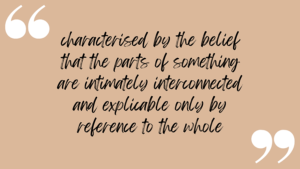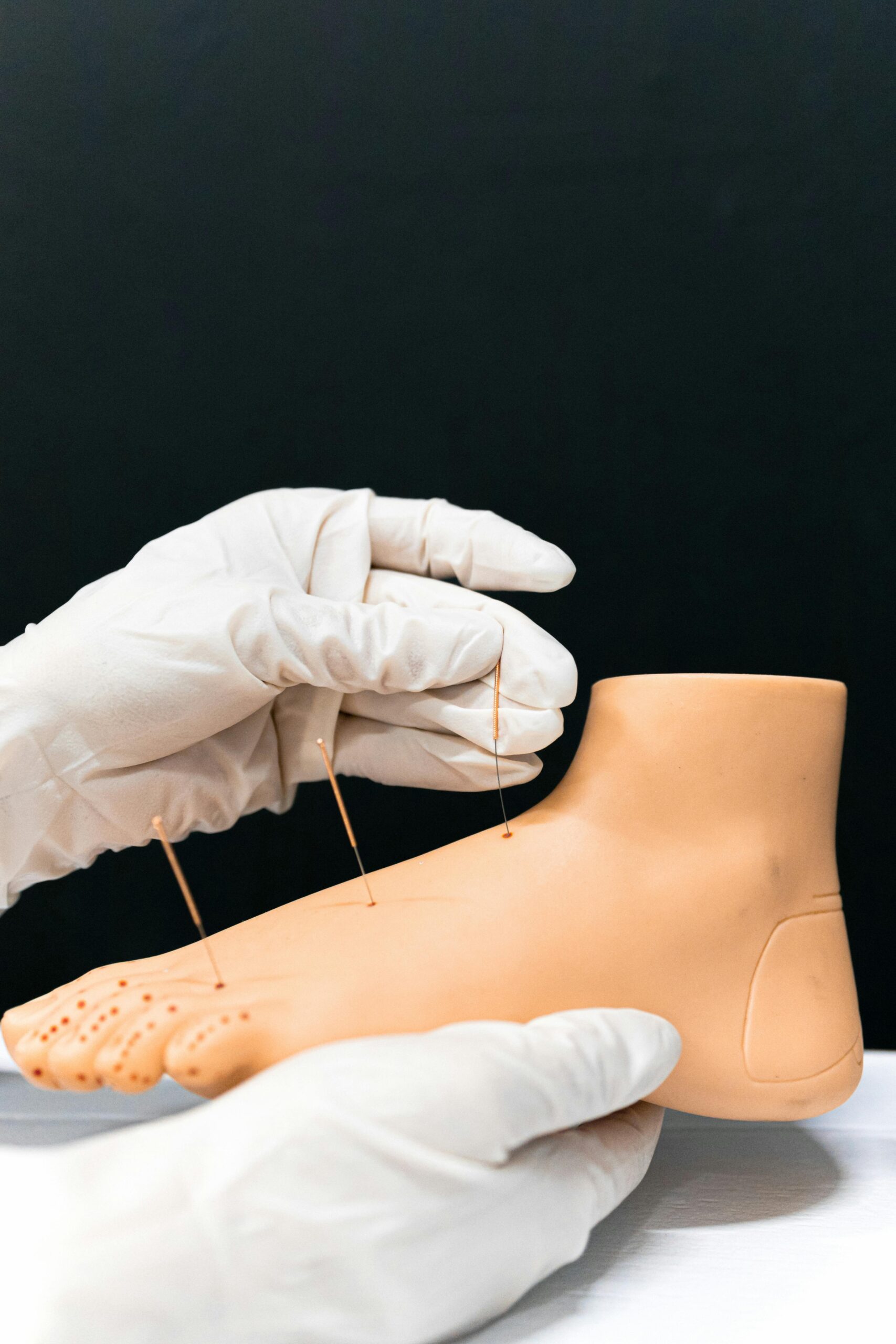Firstly, thanks for being here! The fact that you’re discovering more about holistic wellbeing and looking at new ways to support your health is fantastic! So let’s get to it!
Understanding exactly what we mean by “holistic” is fundamental to appreciating my approach to wellbeing and healing. The definition of “holistic” is:
So in terms of healing; we want to assess the person as a whole, taking into account many other factors rather than just the symptoms of disease, trauma or pain. I have always been aware of the connection between the mind, emotions, body, social factors, and religion/spirituality. All these dimensions of being human have a crucial influence on how we experience everything in our lives; including illness, ailments and pain (emotional and/or physical), how these things manifest in our daily lives, how we sustain them, and how we perceive them. Such holistic awareness is present in all my therapies and it brings quantifiable results.
If, for example, you present with pain in your back, the medical approach would be to treat the pain perhaps with medication and movement. What is missing here, is an understanding of the source of the pain; the real reason that you experience it. So treating your back pain this way can relieve the immediate symptom but it does not address or correct the cause and therefore, the pain can return. Often, pain is a symptom of an imbalance in one or more of the holistic elements of your life.

Western medicine has traditionally viewed physical health and mental health as two separate factors and considers and treats them in isolation. But what we are learning now with a holistic approach to wellbeing is how interconnected these two elements are and how they impact and interact with each other. Mental health conditions are sometimes considered “invisible” because there is nothing physically to see, touch, and heal with a bandage. But if you look holistically at the patient, there will often be physical symptoms or presentations that are intertwined with the emotional load.
If the patient is stressed, they may be unable to sleep, their energy and emotional resolve is low, they are holding constant tension in their muscles and begin to feel sore. Their body is in a constant state of fight or flight and their sympathetic nervous system is overloaded. When this persists, the body senses that the patient is not “listening” to the symptoms of stress and can instead turn up the volume on pain signals in the body, perhaps where a previous injury or ailment has occurred. The body knows that that message pathway is open and that the patient has previously “listened” through this mode of communication. In this instance, treating the pain with medication will only treat that particular symptom of stress, it will not tackle the cause; the stress itself.
Similarly, someone who is in constant physical pain due to injury may begin to suffer with their mental health due to the constant presence of pain, the hopeless feeling that the situation is not improving, their lack of sleep, the negative internal narrative that builds an expectation of pain, and the limitations that pain can impose on the rest of their lives (movement, socialisation etc). Prescribing a mental health medicine for this patient, will only combat one of the factors affecting their health.
My holistic healing can do both. Therapists who employ a holistic approach tend to get better results due to creative thinking, continuing education and usually have a few healing “tools” in their super-powers toolkit
Holistic healing is a health strategy which involves several different types of healing disciplines. These could include diet, exercise, acupuncture, massage, osteopathy, NLP (or awareness of the power of words), meditation, yoga, talking therapies, trauma healing and many more.
Acupuncture for example, stimulates the body’s natural healing abilities for both physical and emotional wellbeing. It releases pain-relieving endorphins and feel-good hormones and stimulates the central nervous system to do it’s jo; co-ordinating signals around our body that determine how we move, heal, think and feel.
Massage has long been accepted as a means of relaxation and reconnection of mind, body and spirit. It can also help to work out the tension and muscle energy that cause pain and help toxins to leave the body more quickly.
At Ana Guerrero Holistic Wellbeing, YOU are at the centre of your health strategy. I hold the space and provide the mechanisms to empower you to rebalance and reconnect with your innate ability to heal.






